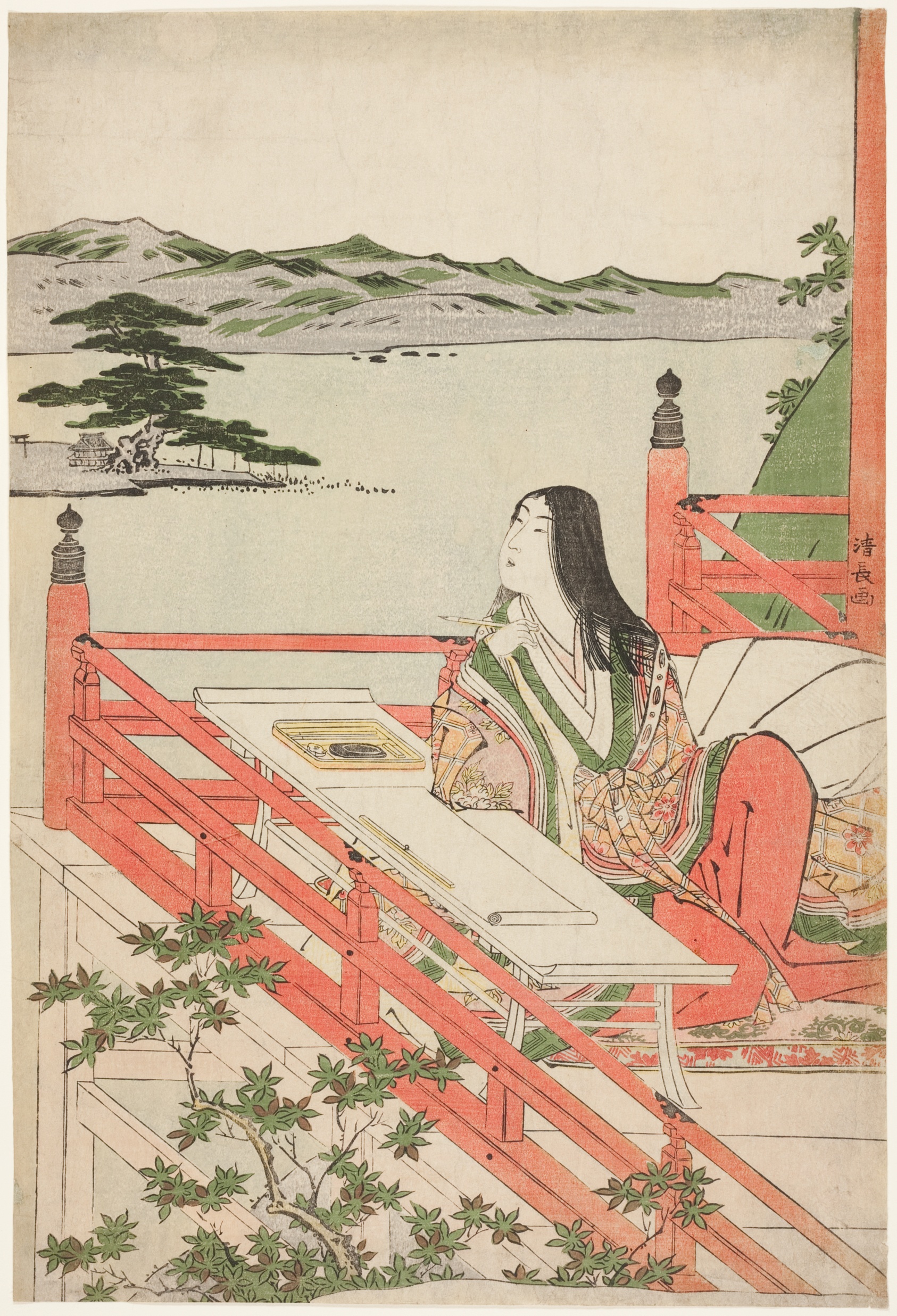紫 式部 Murasaki Shikibu (973 or 978 - 1014 or 1031)

Murasaki Shikibu, perhaps one of the best known writers in Japanese history, served as a lady-in-waiting to Empress Shōshi during the Heian period (794 - 1185). Her Genji Monogatari, or The Tale of Genji, is one of the earliest examples of long-form prose fiction and the most well-known book in Japanese history, inspiring countless paintings, woodcuts, emaki, and poems.
Born into the powerful Fujiwara clan, Murasaki had the unusual privilege of learning Chinese, which was uncommon for other women of her time. She took after other literary members of her family and gained a reputation for her skill with words. Murasaki was married and had two daughters before her husband passed away, leaving her a widow before she turned 30.
Meanwhile, Murasaki’s uncle, Fujiwara no Michinaga, had managed to wrest control of the Fujiwara clan after the death of his brother, and installed his daughter Shōshi as empress, replacing the previous empress, Teishi. However, a Heian-period empress was expected not only to give birth to the emperor’s heirs, but to cultivate a cultural salon of elite writers and poets. Michinaga, recalling his niece’s literary acclaim, invited her to join Shōshi’s salon as a lady-in-waiting. Murasaki, who had recently begun working on a new tale, accepted the job. In the first entry of Murasaki Shikibu Nikki, Diary of Lady Murasaki, she details the birth of Shōshi and Emperor Ichijō’s first son - a great success for the new empress.
Murasaki completed The Tale of Genji while serving Shōshi, earning great prestige for herself and her empress. The 54-volume prose tale was immediately popular among the Japanese aristocracy, who devoured each volume as she completed it. Over the next several centuries, Genji became a manual of poetry, and for women, a romantic ideal to retell again and again amongst other aristocratic women.
Murasaki’s greatest work also inspired many others. The epic romance of Prince Genji and his descendants is a popular subject for emaki, painted screens, and woodcuts (like the one above). Women like Keifukuin Kaoku Gyokuei even produced their own hakubyō (black-and-white) emaki, which could serve as visual aids for retelling the story. Murasaki’s poetic style was held up as the ideal for Japanese poetry, and Fujiwara no Shunzei, a 12th century poet who famously commented that “to compose poetry without having read Genji is deplorable”.[1] In less than 200 years, Genji became a cornerstone of Japanese literature, where it has staunchly remained to the present day.
Footnotes
- G. G. Rowley, "The Tale of Genji: Required Reading for Aristocratic Women," in The Female as Subject: Reading and Writing in Early Modern Japan, ed. P. F. Kornicki, Mara Matessio, and G. G. Rowley (Michigan: University of Michigan Press, 2010), 40.